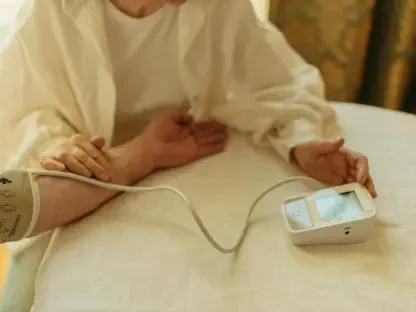When will your smartwatch become as crucial to your health as your doctor? This question looms large as wearable technology’s role in healthcare rapidly evolves. In 2025, wearable devices are no longer just fitness gadgets. They’ve become essential tools offering real-time health insights. For instance, recent data highlights that worldwide smartwatch sales have soared, with millions relying on these devices for health monitoring. Imagine skipping a routine health check because your smartwatch has already identified areas of concern with greater accuracy.
Why the Future of Wearable Tech Matters
Wearable technology’s role in personal health monitoring is becoming more pivotal, with patients increasingly relying on devices to track and manage their health. This trend points to growing challenges within healthcare, such as accessibility, costs, and inefficiencies, which wearables can potentially address. With the rise of integration between wearables and healthcare systems, profound transformations in patient outcomes and health services are possible.
Unpacking the Healthcare Transformation
The precision of wearable technology has significantly advanced, with many devices earning FDA clearance for medical use. However, there remains a division in trust, as some patients now value their wearable gadgets over traditional medical equipment, which illustrates the emerging paradigm shift. Nevertheless, integration gaps and systemic barriers persist, slowing the adoption of wearable technology in mainstream healthcare systems.
Insights From Experts and Users
Healthcare professionals and technologists agree on the potential of wearables to transform health systems. Studies show these devices can reduce emergency room visits and aid in chronic disease management. Patients also share anecdotal stories of avoiding unexpected hospital visits thanks to alerts received on their devices. These perspectives illuminate the tangible impact wearables are already having in healthcare environments.
Designing the Path Forward
To fully integrate wearables into healthcare settings, structured frameworks must be established. Building trust between healthcare providers and technology companies is crucial for aligning goals. Strategic financial models are necessary to create incentives for integration, rewarding efficiency in wearable use. Only through systematic changes can the healthcare industry harness the full potential of wearable technology.
Bridging the Gap Between Technology and Healthcare
The realization that major tech giants, rather than healthcare companies, are spearheading the wearable revolution has provoked contemplation on the evolving healthcare landscape. To not be left behind, healthcare stakeholders need to act swiftly, embracing these technologies. A future breakthrough requires building foundational trust, creating supportive frameworks, and evolving financial structures to fully utilize wearable data, ensuring it becomes an integral part of healthcare rather than a peripheral component.









